My soft and tasty Barese focaccia is a homemade version I learned to make here in Rome, trying to get as close as possible to the authentic taste of Apulian focaccia. It may not be the original recipe, but I assure you it’s really delicious: tall, soft, and full of flavor!
The dough is very hydrated and is worked directly in the baking tray, with slightly wet hands to create those typical dimples on the surface. Then a drizzle of oil, oregano, salt, cherry tomatoes, and black olives… and the aroma that wafts out during baking is simply irresistible.
A simple and genuine recipe, perfect to serve as a savory snack, appetizer, or instead of bread: it conquers everyone at the first bite!
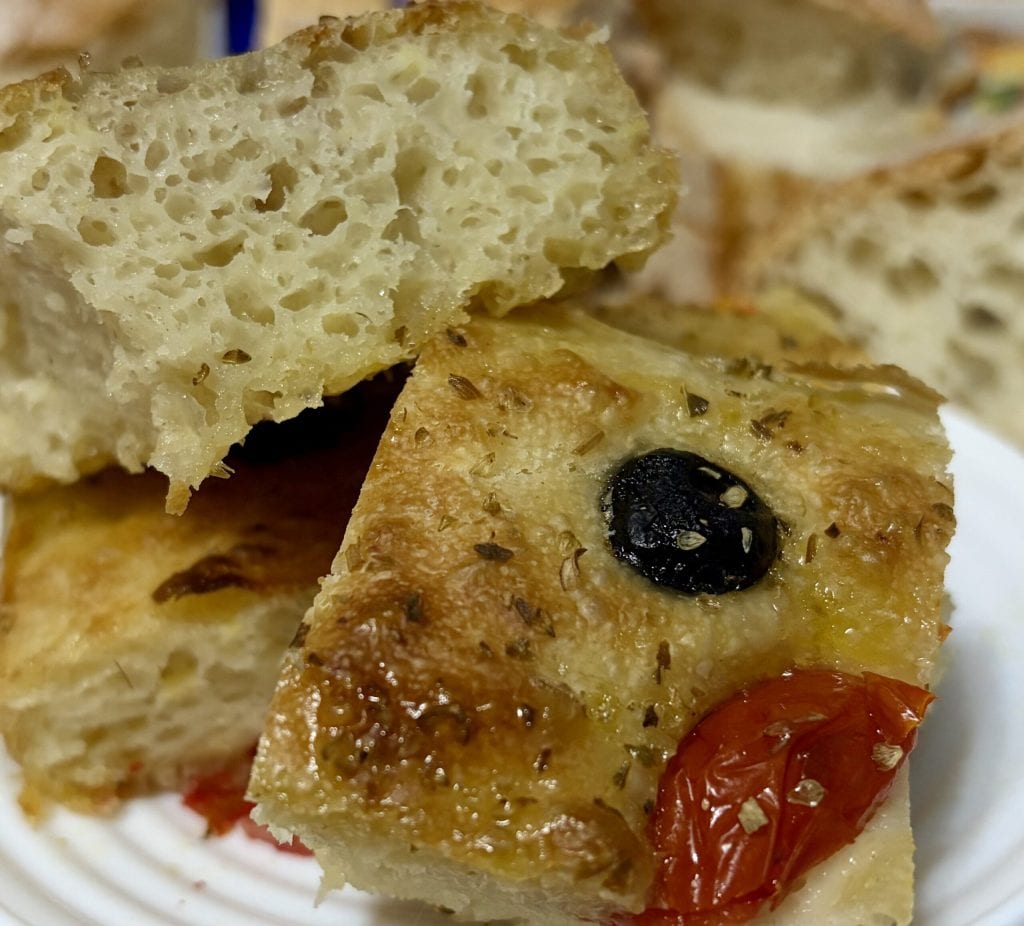
- Difficulty: Easy
- Cost: Economical
- Rest time: 2 Hours
- Preparation time: 15 Minutes
- Portions: 10
- Cooking methods: Electric Oven, Oven
- Cuisine: Italian
- Energy 193.36 (Kcal)
- Carbohydrates 33.44 (g) of which sugars 2.18 (g)
- Proteins 5.53 (g)
- Fat 5.24 (g) of which saturated 0.80 (g)of which unsaturated 0.91 (g)
- Fibers 1.97 (g)
- Sodium 311.00 (mg)
Indicative values for a portion of 100 g processed in an automated way starting from the nutritional information available on the CREA* and FoodData Central** databases. It is not food and / or nutritional advice.
* CREATES Food and Nutrition Research Center: https://www.crea.gov.it/alimenti-e-nutrizione https://www.alimentinutrizione.it ** U.S. Department of Agriculture, Agricultural Research Service. FoodData Central, 2019. https://fdc.nal.usda.gov
Ingredients
- 3 1/3 cups all-purpose flour
- 1/2 cup potatoes
- 1 1/4 cups water
- 1 tsp sugar
- 12 g fresh yeast
- extra virgin olive oil
- salt
- oregano
- 10.6 oz piccadilly tomatoes
- 3.5 oz black olives (pitted)
Tools
- 1 Hand Whisk
- 1 Bowl
- 1 Baking Tray
Preparation
We can prepare the Barese focaccia dough in a stand mixer to speed up the work, but it can also be kneaded by hand: it’s a soft and easy-to-handle dough.
I chose to do it by hand: in a bowl, I put the mashed boiled potatoes, flour, salt, and a drizzle of oil. Separately, I warmed the water, dissolved the sugar and yeast in it, then gradually poured it into the bowl with the other ingredients. I kneaded vigorously for a few minutes, until I obtained an elastic but still slightly sticky dough.
To make the dough softer, I continued to work it with the hand dough whisk, trying to incorporate as much air as possible. I made folds directly in the bowl to give the dough structure without deflating it.
Then I covered the bowl with plastic wrap and let it rise for about an hour and a half. As you can see from the photo, the dough rises well and nice fermentation bubbles form, indicating it’s ready to be stretched out.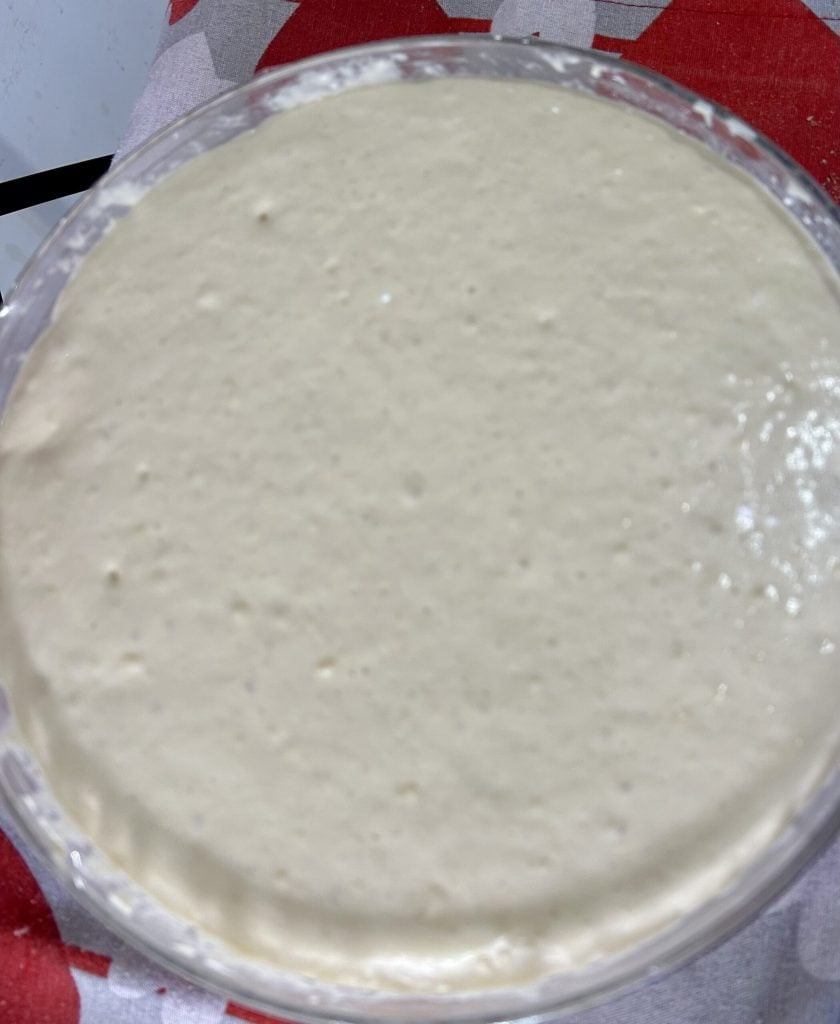
After the first rise, I generously greased the baking tray with extra virgin olive oil and placed the dough on it. With slightly wet hands, I started stretching it, pressing gently with my fingertips to spread it evenly to cover the entire tray.
During this operation, the oil poured on the bottom partially comes to the surface: it’s thanks to the oil and wet hands that the dough can be stretched easily without tearing.
At this point, I covered the tray again and let it rise for another half hour.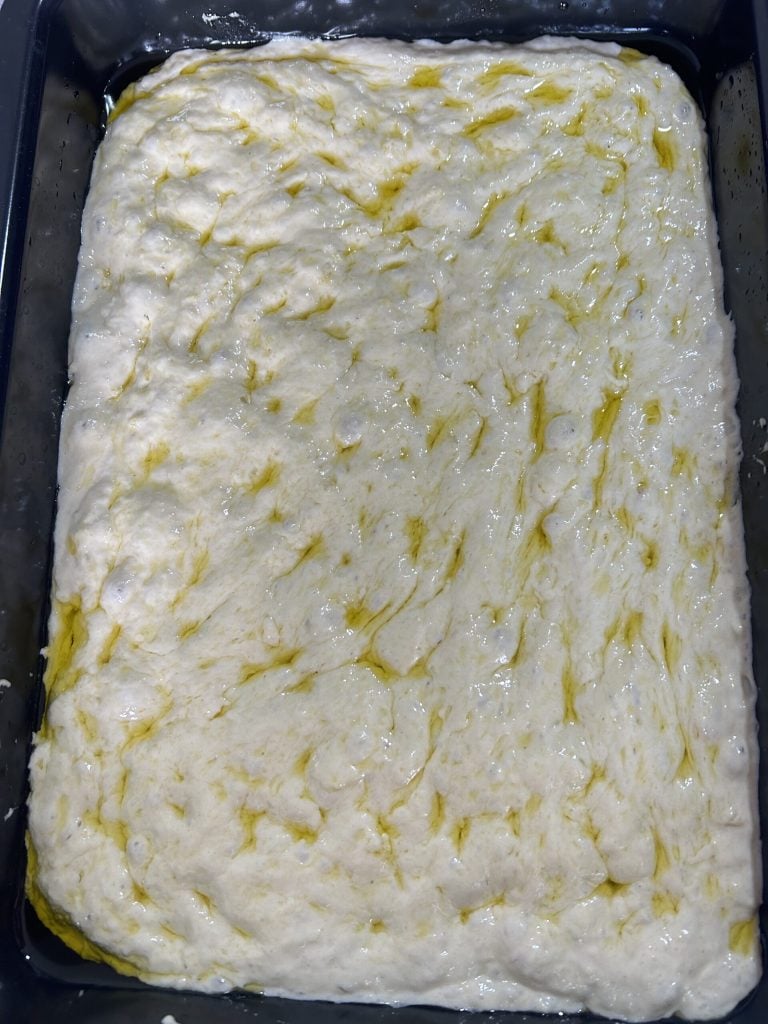
While the focaccia completes its second rising, it’s advisable to turn on the oven to have it nice and hot at the time of baking — it’s important because if the oven isn’t at the right temperature, the focaccia risks drying out.
When the oven reaches 450-465°F, you can quickly top the focaccia with cherry tomatoes cut in half, black olives, a pinch of salt, and some oregano.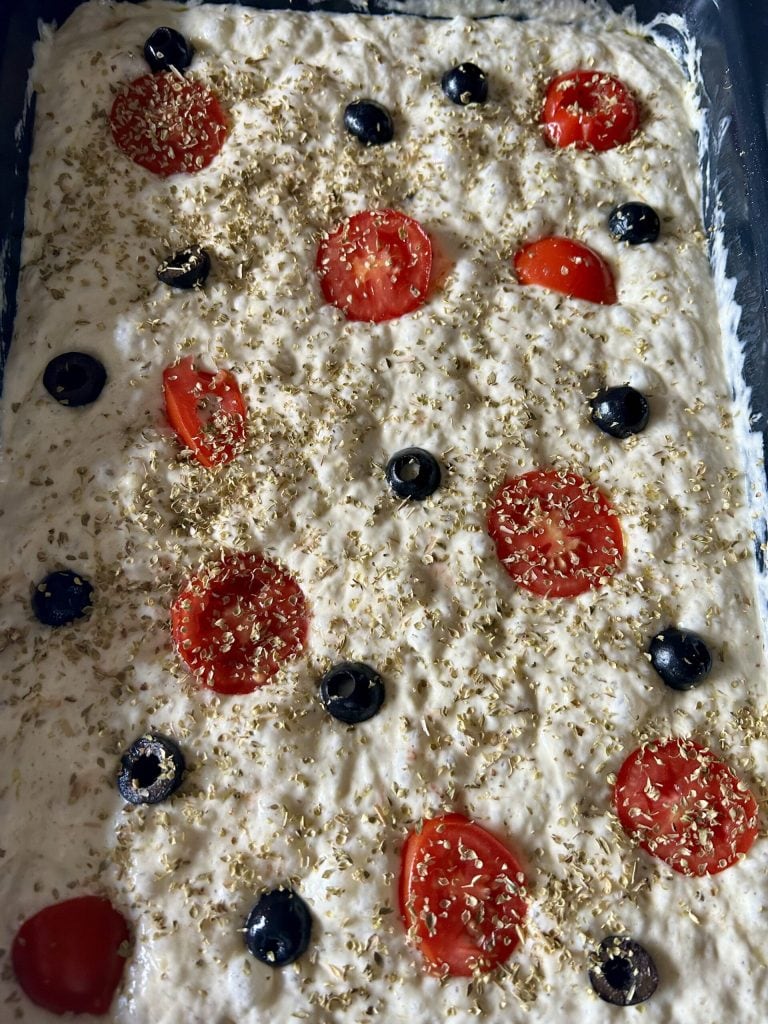
Bake the focaccia in a preheated oven for about 12-15 minutes, until the surface is golden but not too dark. The timing may vary slightly based on your oven, so check it towards the end of baking to achieve perfect browning.
If you prefer a more “red” focaccia, you can also add a few tablespoons of peeled tomatoes on top. I didn’t add any because I wanted to serve it among appetizers, and it was perfect this way!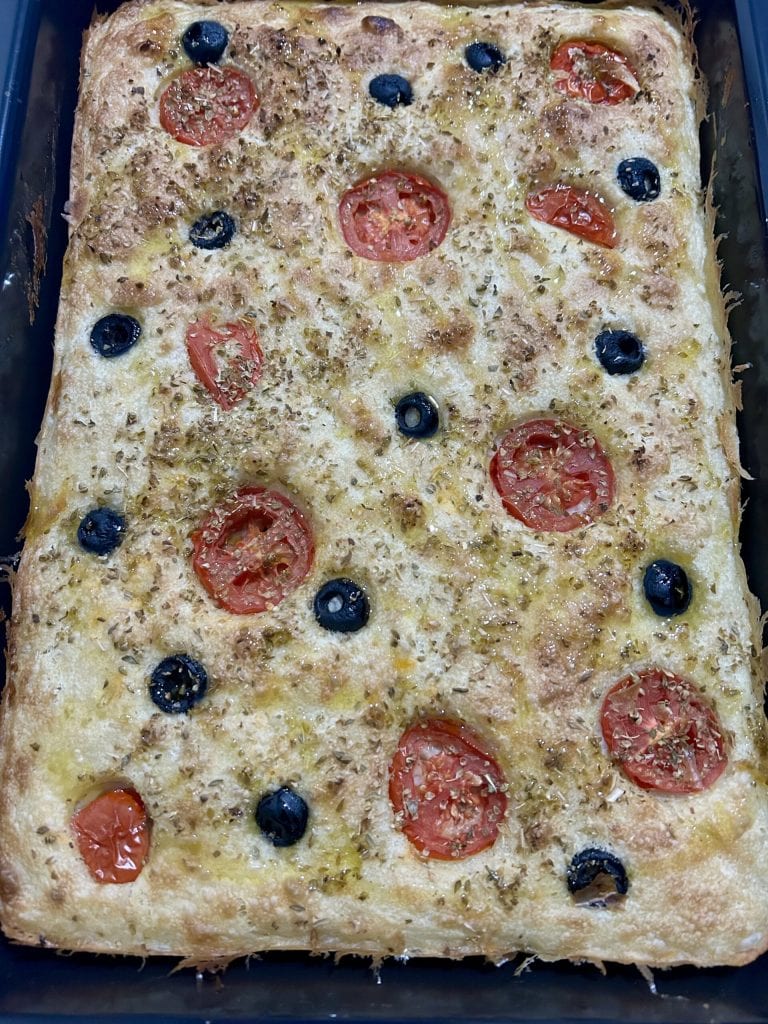
NOTES
If you prefer a more “red” focaccia, you can also add a few tablespoons of peeled tomatoes on top. I didn’t add any because I wanted to serve it among appetizers, and it was perfect this way!
Barese focaccia is excellent freshly baked, but it remains delicious even warm or at room temperature.
FAQ (Frequently Asked Questions)
Can I make Barese focaccia dough without potatoes?
Yes, it is possible, but the potatoes add softness and help retain the moisture in the dough. Without potatoes, the focaccia will be slightly denser.
Can I use dry yeast instead of fresh yeast?
Absolutely yes! If you use dry yeast, remember to dissolve about one-third of the amount indicated for fresh yeast in lukewarm water with the sugar and let it activate for a few minutes before adding it to the dough.

